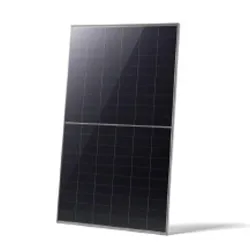solar panel size needed
Understanding Solar Panel Size Needed for Your Home
In recent years, solar energy has transitioned from niche to mainstream as an effective and sustainable alternative to traditional fossil fuels. As the demand for solar energy systems increases, more homeowners are looking to invest in solar panels to reduce electricity costs and contribute to a greener planet. However, one of the most crucial questions that arises during the planning phase is What size solar panel system do I need? In this article, we will explore the factors that influence the size of the solar panel system required for your home and how to determine the optimal size for your energy needs.
Understanding Energy Consumption
The first step in figuring out the appropriate size of your solar panel system is to understand your current energy consumption. This is typically measured in kilowatt-hours (kWh) and is usually found on your electricity bill. Look for your total kWh usage over a month or even a year to get a clearer picture of your average energy consumption. Keep in mind that energy usage may fluctuate throughout the year due to seasonal changes, holidays, or lifestyle shifts.
Additionally, consider any future changes in energy requirements. For example, if you plan to add electrical appliances or consider electric vehicles, it's wise to factor these into your calculations to avoid undersizing your system.
Calculating Solar Panel Output
Once you have an understanding of your energy consumption, you can begin to calculate how much solar energy you will need to produce to meet those needs. The average solar panel produces around 250 to 400 watts under standard test conditions. To estimate the number of panels required, you will need to determine how many kWh of energy you wish to generate monthly.
Let’s say your home consumes about 900 kWh per month. If we assume each panel generates an average of 300 watts per hour, the monthly production of an individual solar panel (assuming it receives about five hours of full sun each day) would be around 45 kWh (300 watts x 5 hours x 30 days).
To meet your energy needs, you would divide your monthly consumption by the energy produced by one panel \[ \text{Number of Panels} = \frac{\text{Monthly Energy Consumption}}{\text{Monthly Production per Panel}} \] \[ \text{Number of Panels} = \frac{900 kWh}{45 kWh/panel} = 20 \]
solar panel size needed

In this example, you would need approximately 20 solar panels to meet your average monthly energy consumption.
Other Factors Influencing Size
While your energy consumption and solar panel output are key calculations, several other factors can influence the size of the solar panel system you require
1. Location The amount of sunlight your home receives is vital. Areas with more sunshine will allow panels to generate more electricity, thus affecting how many panels you may need. You can find the average sunlight hours for your specific location through solar mapping services.
2. Roof Size and Orientation The available space for installing solar panels is a critical factor. If your roof is small or shaded, you may need more efficient panels that generate more electricity per square foot, or consider other installation options such as ground-mounted systems.
3. Local Regulations and Incentives Be sure to check local regulations regarding solar installations, as some regions may have requirements that influence system size. Additionally, there may be incentives or rebates available for solar systems that could impact the overall cost and energy output effectiveness.
4. System Losses Keep in mind that energy losses often occur due to system inefficiencies (typically around 15% to 20%). This should also be considered in your calculations to ensure you meet your energy goals after accounting for these losses.
Conclusion
When considering the installation of solar panels, determining the appropriate size for your specific needs requires understanding your current energy consumption, the output of solar panels, and taking into account various influencing factors. Conducting a detailed assessment will not only help you size your solar panel system accurately but also ensure that you maximize your investment in renewable energy. As you embark on this journey towards sustainable energy, consulting with a solar energy professional can also provide tailored solutions that meet your unique energy needs.
-
String Solar Inverter: The High-Efficiency Solution for Smart Solar EnergyNewsJul.14,2025
-
Revolutionizing Rooftop Energy with the Power of the Micro Solar InverterNewsJul.14,2025
-
Power Independence with Smart Off Grid Solar Inverter SolutionsNewsJul.14,2025
-
On Grid Solar Inverter: Powering the Future with Smart Grid IntegrationNewsJul.14,2025
-
Monocrystalline Solar Panels: High-Efficiency Power for the Future of Clean EnergyNewsJul.14,2025
-
Bifacial Solar Panel: A Smarter Investment for Next-Generation Energy SystemsNewsJul.14,2025







